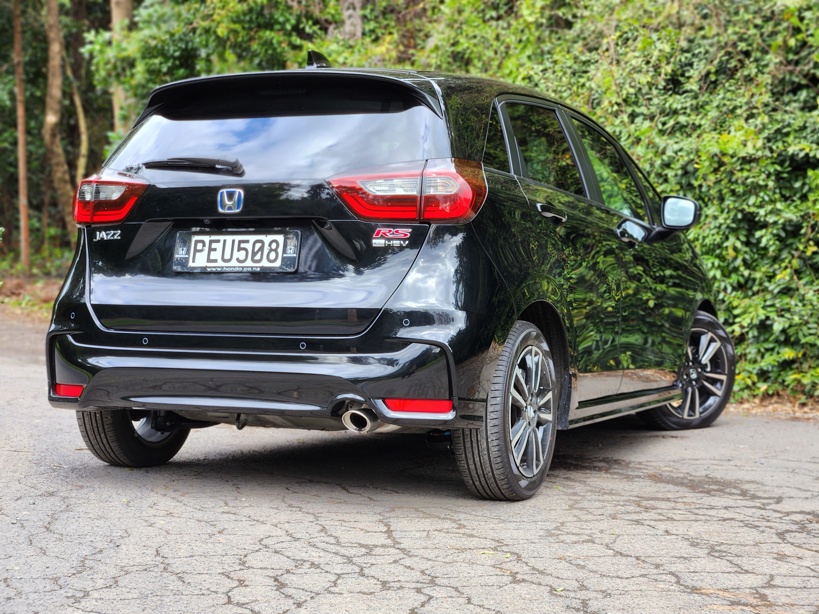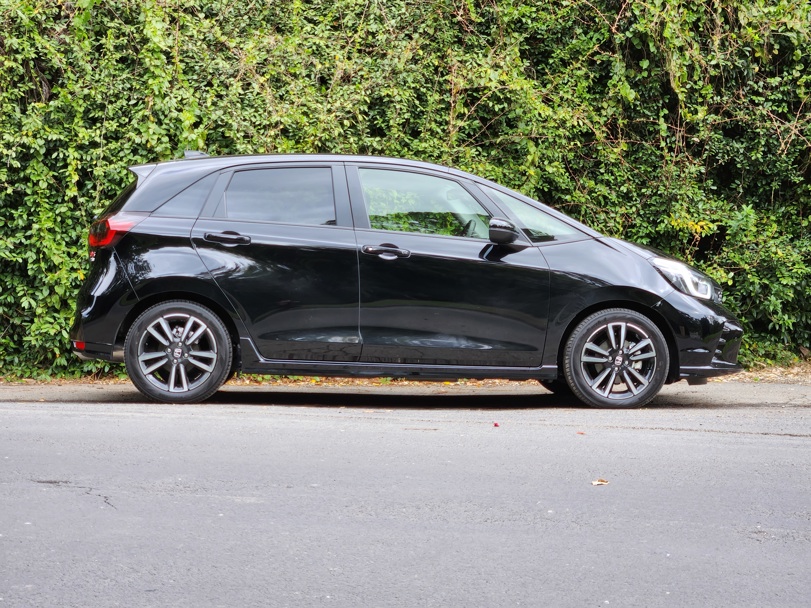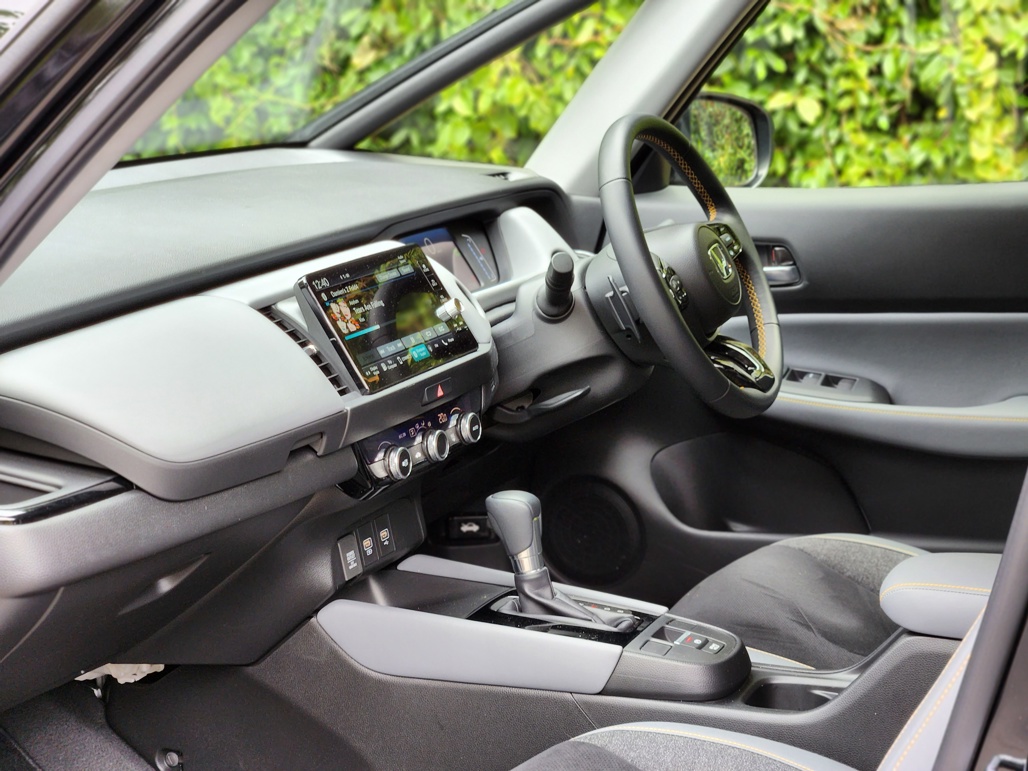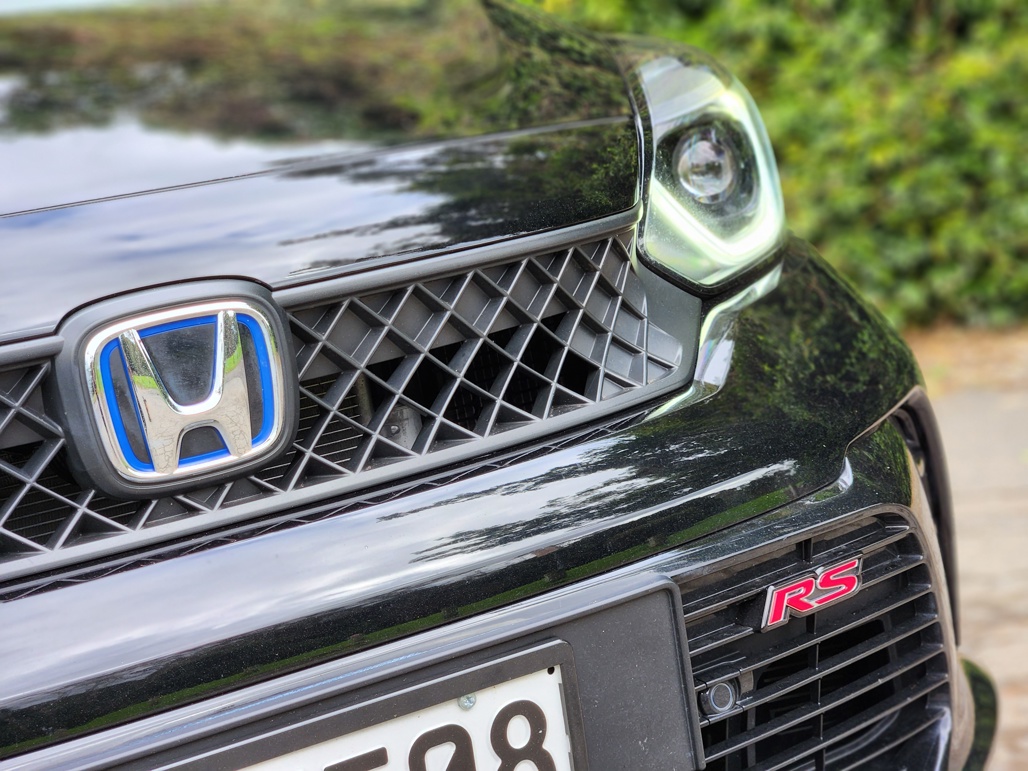Let's get the obvious thing out of the way first - Honda has a long history of using grandiose nomenclature on modest models: Sport, RS (which traditionally stands for 'Rally Sport') and even the hallowed Mugen badges have appeared on, shall we say, 'pedestrian' models that are little more than a few stickers and maybe a body kit.
So, of course, when you see a "Jazz RS" popping up in Honda's line up, your first thought isn't of a searing performance version of Honda's city supermini. But Honda is pushing the newest member of the Jazz family with the whole "racing genetics" thing and, along with that, explicitly linking the Jazz RS to the Civic Type R, so maybe there is hope that this one is different? Maybe?
Well, get that out of your head straight away, because the only things the Jazz RS and Civic Type R share is a Honda badge on the nose and one shade of black paint. Crystal Black Pearl, to be specific, the colour of the car you see here.
So, in effect, this car has the most Type R DNA in it, having both a Honda badge and a coating of Crystal Pearl Black. So did I feel ready to knock off a Nurburgring lap record in it?
Well, no. But it was absolutely superb at running to the supermarket to buy beer and chips.
Sport, RS and even the hallowed Mugen badges have appeared on, shall we say, 'pedestrian' models that are little more than a few stickers and maybe a body kit.
Honda's marketing nonsense aside, the Jazz RS is every bit the same smooth, roomy and almost aggressively frugal small hybrid hatch as the rest of the Jazz range (apart from the entry Crosstar, which isn't a hybrid), with a quality interior and the insanely practical Magic Seat setup in the rear.
At $36,700 the RS sits smack in the middle of the Jazz range, above the Crosstar and under the Luxe Sport (and the even more credibility-stretching RS Mugen), and qualifies for a $2242 Clean Car rebate.
On the inside, the RS drops the Luxe Sport's wireless phone charger and leather trimmed seats, adding fabric seats and a unique grey interior colour scheme, with a splash of sporty colour from yellow stitching on the seats, steering wheel and door trim.
On the outside it gets an RS body kit, unique grille and bumpers, and special "RS Design" alloy wheels.
There is a bit more to the whole "racing genetics" thing under the skin however, with the RS getting an extra "Sport" drive mode that brings pretend gear shifts to the continuously variable transmission and paddles on the steering wheel that allow the driver to select between four levels of engine braking/regeneration. The RS also has a unique suspension tune that is a bit firmer than the Luxe Sport.
So did I feel ready to knock off a Nurburgring lap record in it? Well, no. But it was absolutely superb at running to the supermarket to buy beer and chips.
The RS also came with a slight power bump over the rest of the hybrid range, but this has since spread to the other cars, so the 78kW/127Nm petrol engine and 90kW/253Nm electric motor remain the same.
The e:HEV powertrain is a technically impressive piece of kit that is essentially a range-extender: the petrol engine acts as a generator for the battery, which supplies power for the electrics that ultimately drive the wheels.
There are multiple ways they engine and motor can team up to propel the RS and none of them matter in the slightest to the driver, because you will hardly ever know what it is doing, such is the seamless transition and total lack of options for the driver to select from - the car just does it all, better than you ever would anyway.
And this is part of what makes the e:HEV Jazz so good - despite having a complex and technically clever powertrain, it asks nothing of the driver other than they hop in, start it, drop it into drive and push the go-pedal to move.
And it really doesn't matter how hard you push that go-pedal either, as the Jazz remains remarkably frugal no matter if you drive it like nana on her way to the shops or Ayrton Senna around the Nurburgring. Honda says the Jazz RS has a WLTP fuel consumption figure of 3.8L/100km (and CO2 emissions of 68g/km), and that is effortlessly easy to achieve. Even hammering it to make the most of those "racing genetics" will only return numbers in the mid-fours.
Speaking of hammering it, the suspension tweaks that make the RS a bit firmer than the Luxe Sport are barely noticeable around town, but do actually sharpen the RS up a bit on a winding road. It's not a Civic Type R (although Honda would like to to believe that...), but it still corners precisely and securely, and with a bit more engagement than the standard car.
Cut through all the marketing and the Jazz RS is an excellent mid-spec contender in the small hatch segment. It adds a (tiny) bit of zing to the Jazz range while remaining an excellent city car that is roomy, versatile and, above all else, impressively frugal.
While RS usually stands for "Rally Sport" on a performance car, in this case it is probably more suitable to consider it as "Rather Sensible". Which it actually is.
BREAK IT DOWN
HONDA JAZZ RS
ENGINE: 1.5-litre petrol hybrid
POWER: 90kW/253Nm (electric motor) and 78kW/127Nm (petrol engine)
GEARBOX: Continuously variable transmission, FWD
PRICE: $36,700
PROS: Supremely frugal, not matter how you drive it, remarkably spacious interior, comfortable, quiet and very capable.
CONS: Infotainment system still quite unintuitive, interior layout not as good as Civic, all the 'racing genetics' stuff is silly...











